Product
Firmness
Score
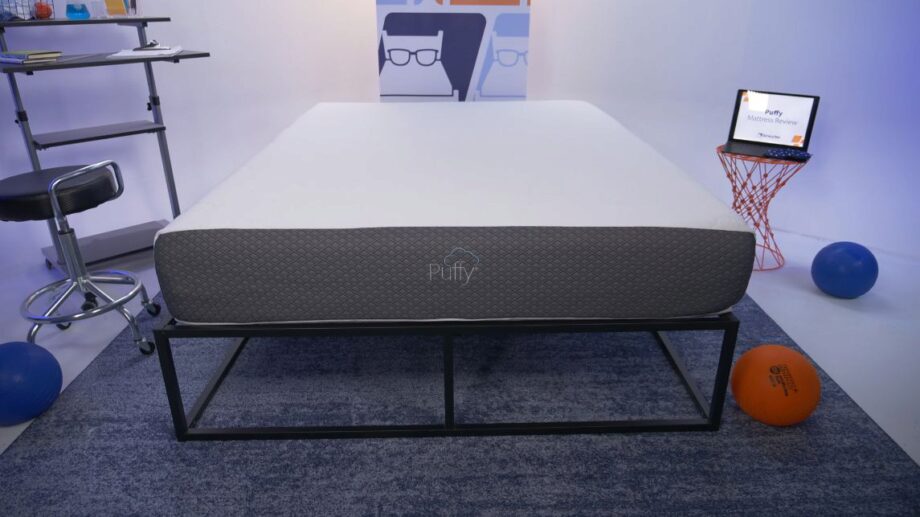
Product
Firmness
Score
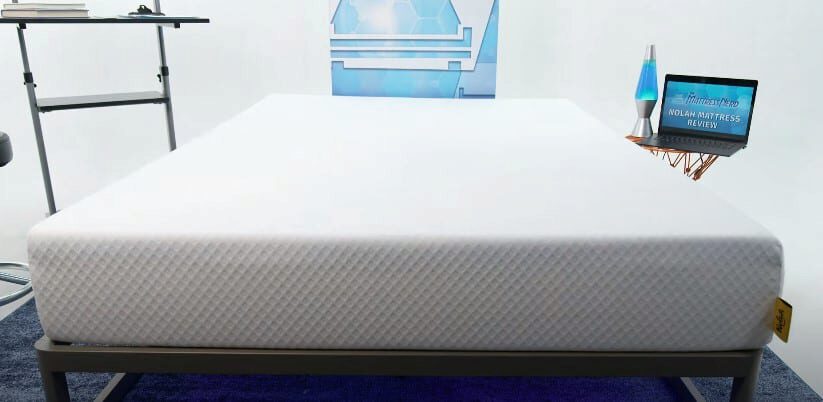
Disclosure: By clicking on the product links in this article, Mattress Nerd may receive a commission fee at no cost to you, the reader. Read full disclosure statement.
The Puffy is a memory foam mattress with a slight body hugging surface and exceptional motion isolation. The Nolah Original is an all-foam bed known for sleeping cool and having an almost bouncy, responsive feel.
The Puffy is preferred by most memory foam fans and people who want exceptional pressure relief and spinal alignment. The Nolah outperforms the Puffy in terms of heat retention and ease of movement, making it better for hot sleepers and people who toss and turn. Both are excellent beds for lightweight and average-weight folks of every sleeping position, and they are great mattresses for couples.
Want to know how we test our mattresses? Read up on our testing methodology.


| Puffy is best for… | Nolah is best for… |
| Memory foam fans | All-foam fans who sleep hot |
| Lightweight and average-weight folks | People who toss and turn |
| Couples | Back sleepers |
We tested out each mattress to see how they perform when it comes to providing a good night’s sleep. Here’s what we found out.
The Puffy and Nolah fall at similar points on the 1–10 firmness scale, with 10 being the firmest. At 6/10, Nolah is a medium-firm bed, which is the firmness level most people prefer. Puffy falls at a 7/10, also medium-firm, but closer to the firmer end of the spectrum. Back and stomach sleepers will enjoy this the most.
Both of these beds have a soft top layer with a firmer foam transition layer that lends supportive firmness with light pressure relief. The balanced firmness in both beds supports proper alignment for most stomach and back sleepers. Side sleepers who like a firmer feel will see great pressure relief on the Puffy, while side sleepers who like a soft feel will see great alignment on the Nolah.
See: Best Mattresses for Side Sleepers
The Nolah original has an all-foam construction that offers fantastic pressure relief and adequate cushion, all without that “hugging” sensation.
Also a foam mattress, Puffy offers a balanced yet responsive foam feel. Because of this, the mattress offers great mobility and support, especially for those who toss and turn in their sleep.
The Nolah Original works well for all sleeping positions, but since it’s a foam mattress that falls on the softer side, we highly recommend it for side sleepers. We also think it provides enough support for your spine, which makes it also suitable for back and stomach sleepers. However, heavier sleepers may find it a little too soft to have proper support for the hips. The Nolah mattress is also very responsive and can easily adapt to changes in movement, making it great for combination sleepers.
All sleeping positions can find comfort in the Puffy mattress, but similar to the Nolah Original, it’s better suited to certain sleeping positions. Since it’s a combination of soft and responsive, we think side sleepers and back sleepers will be the most comfortable with it. Most stomach sleepers may have trouble keeping their hips elevated with the Puffy mattress, which may lead to joint pain. Combination sleepers may have mixed experiences since your dominant sleeping position will be the determining factor.
Puffy Performance By Body Type & Sleeping Position:
| Body Type: | BACK SLEEPERS | STOMACH SLEEPERS | SIDE SLEEPERS |
| Lightweight (< 130 lbs): | 4 | 3 | 5 |
| Average-weight (130–230 lbs): | 3 | 3 | 4 |
| Heavyweight (> 230 lbs): | 2 | 2 | 3 |
ABC Performance By Body Type & Sleeping Position:
| Body Type: | BACK SLEEPERS | STOMACH SLEEPERS | SIDE SLEEPERS |
| Lightweight (< 130 lbs): | 5 | 4 | 5 |
| Average-weight (130–230 lbs): | 4 | 3 | 5 |
| Heavyweight (> 230 lbs): | 3 | 2 | 4 |
1 = Very poor, 2 = Not good, 3 = Fair, 4 = Good, 5 = Excellent
Both mattresses are great for average weight back sleepers since they both have excellent pressure-relieving foam layers.
Average weight side sleepers will also be comfortable with both mattresses since they provide great spinal support, pressure relief, and body-conforming qualities.
Both the Nolah and Puffy mattresses are too soft to provide adequate hip elevation for average weight stomach sleepers, but the Nolah slightly outperforms the Puffy in this aspect.
Both mattresses do a great job of responding to sudden movement changes, so we recommend either mattresses for average weight combination sleepers.
We think both mattresses are too soft to maintain a neutral spine alignment for heavyweight back sleepers.
Since both mattresses fall on the softer spectrum, we think that the majority of heavyweight side sleepers may find that they “sink” too much in either.
Similar to the previous two positions, heavyweight stomach sleepers will find both mattresses to be too soft to provide enough support. Though both mattresses have great responsiveness, we think that heavyweight combination sleepers will still have trouble moving around since they’ll likely find themselves “sinking” too much.
Lightweight back sleepers should have no trouble with both the Nolah and Puffy mattresses since both provide great support, cushion, and pressure relief.
We can also recommend both mattresses for lightweight side sleepers since they’re soft enough to provide comfort and support for the shoulders and hips.
We predict that lightweight stomach sleepers will find comfort in a medium-firm mattress like Nolah. On the other hand, we think that the Puffy mattress is too soft for most stomach sleepers.
Lastly, lightweight combination sleepers should sleep comfortably on both mattresses since they won’t encounter any issues when tossing and turning.
Though both mattresses are the same thickness at 10”, the Nolah Original is made up of three distinct foam layers, while the Puffy is constructed out of memory foam. Here’s an in-depth look at how each mattress layer stacks up against the other.
| Nolah Mattress Materials | Puffy Mattress Materials |
| TENCEL Mattress Cover | Stain-Resistant Cover |
| 2” AirFoam | 2” Cooling Cloud Foam |
| 1” High-Resilience Foam | 2” Climate Comfort Foam |
| 7” High-Density Base Foam | 6” High-Density Foam |
The Nolah cover is made from a sustainable, eco-friendly material called TENCEL, which boasts breathability and the ability to wick away body moisture. The Puffy cover consists of standard polyester, which doesn’t provide much in terms of breathability.
Nolah’s comfort layer is made from their patented AirFoam technology, which features air pockets for airflow, pressure-relieving qualities, and body-contouring features. The Puffy has a layer of Cooling Cloud foam which comes with gel infusions that pull body heat away and promote airflow.
Both mattresses use high-density foam layers for support and foundation, with the Nolah Original having a slightly thicker layer.
| Size | Puffy Prices | Nolah Prices |
| Twin | $1949.00 | $999.00 |
| Twin XL | $2099.00 | $1199.00 |
| Full | $2249.00 | $1349.00 |
| Queen | $2399.00 | $1149.00 |
| King | $2599.00 | $1749.00 |
| California King | $2599.00 | $1749.00 |
For exclusive discounts on both beds see our Puffy mattress coupons and Nolah mattress coupons.
How do these mattresses compare when it comes to sleeping performance? Here’s what we found out after testing each mattress.
Nolah’s proprietary foams sleep cooler than Puffy’s memory foam layers because they’re more breathable. So despite Puffy’s cooling gel memory foam, it’s not as good as the Nolah for folks who sleep hot.
The Nolah and Puffy are both good mattresses for people who sleep with a kid, pet, or partner. With every layer made from foam, your partner’s movements won’t spread across the surface.
But if you’re a light sleeper or one of you is quite active during the night, you may find yourself sleeping more soundly on the Puffy. This is because memory foam—which makes up the Puffy’s top foam layers—is the best mattress material for isolating motion. For more beds like this, see our list of the best mattresses for couples.
A bed with supportive edges is comfortable to sit on when getting ready in the morning. Plus, you won’t feel like you’re about to roll off when you claim a few extra inches when sleeping with a bed hog.
The Nolah and Puffy both provide decent edge support, but our sleep testers experienced greater support along the Nolah’s perimeter. The extra sturdiness is thanks to a slight difference in mattress construction—the Nolah’s durable base foam is 1” thicker than the Puffy’s.
Both of these mattresses have pressure-relieving foam layers that cradle the body’s curves. Side sleepers need the greatest cushion, and the Puffy is an excellent side sleeper mattress. Nolah is too, but not for side sleepers with hip pain.
Related: Best Memory Foam Mattresses
We recommend the Nolah for lightweight side sleepers thanks to the soft, responsive top layer that readily gives upon contact. The Puffy’s slow-response memory foam comfort layer is also plush but doesn’t respond as readily to lightweight folks. But once it conforms, the pressure relief is top-notch. As such, the Puffy slightly outperforms the Nolah for average-weight side sleepers.
Both the Nolah and Puffy mattresses each have pain-relieving qualities, but each performs differently when you factor in the sleeping position and weight.
The Nolah Original handles your pressure points well, thanks to its AirFoam layer that provides strong support for your spine. However, our pressure map showed that some side sleepers may experience pressure build-up in the hip area, which can lead to joint pain.
The Puffy mattress feels a lot like sleeping on a cloud, and while the softness and cushion are great for side sleepers, they may exacerbate back and joint pain in different positions. Stomach sleepers and heavier sleepers may find inadequate support in Puffy, which can cause your back to arch out of alignment.
Both beds have average durability, with a typical lifespan of seven to 10 years. However, we expect the Nolah to last slightly longer thanks to a thicker layer of support foam. Plus, Nolah’s warranty covers shallower body impressions than Puffy’s warranty, giving you better coverage for durability issues with the Nolah mattress.
Puffy provides free shipping in the contiguous U.S. You’ll also get a 101-day sleep trial, but you’ll have to wait until 14 nights to get free returns and a full refund. Puffy also gives you a Lifetime warranty that covers material and manufacturing defects.
Nolah also offers free shipping in the contiguous U.S. but offers a longer 120-day sleep trial. Only after 30 days will you be able to apply for free returns and a full refund. You’ll also receive a Lifetime warranty for each mattress, which covers full coverage for 15 years and prorated repair costs after.
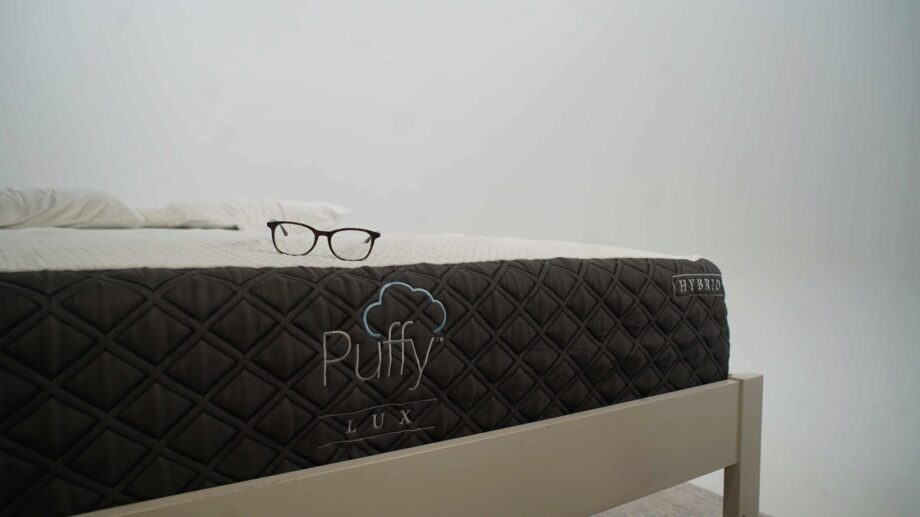

Financing options are available for this mattress.
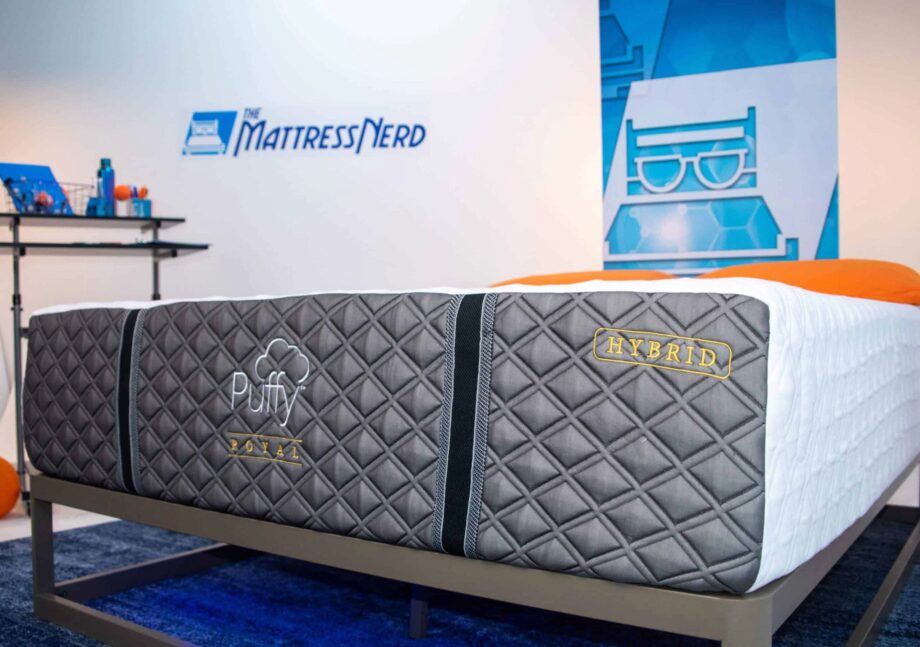

Financing options are available for this mattress.
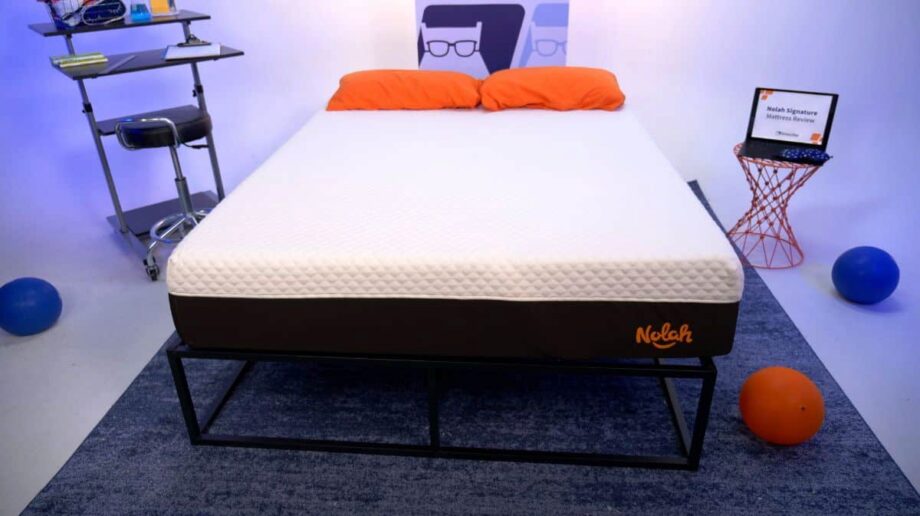

Financing options are available for this mattress.
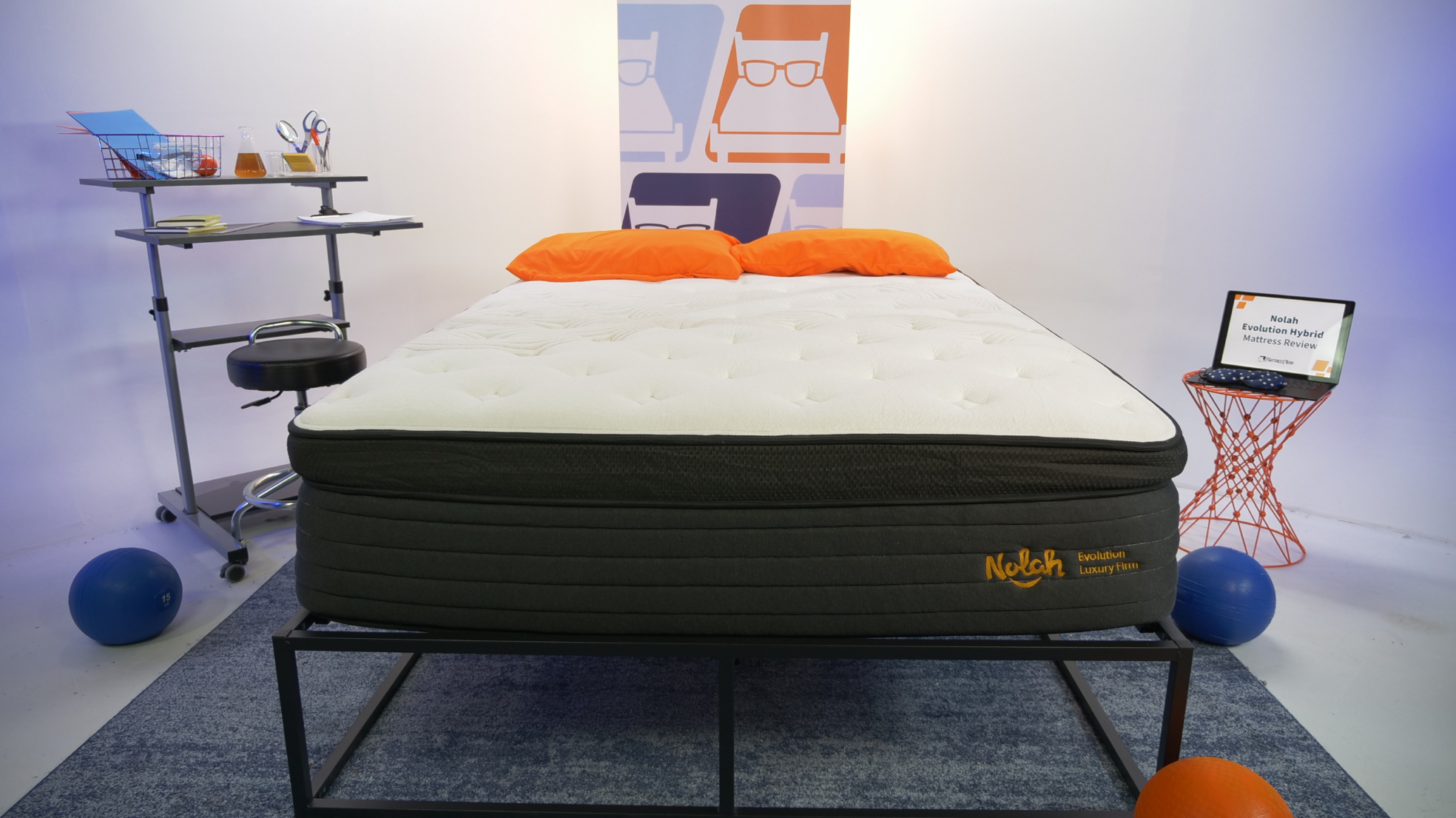

Financing options are available for this mattress.
| Puffy Comparisons | Nolah Comparisons |
The Puffy’s memory foam design makes it the best mattress for those who like the conforming cradle of traditional memory foam beds. But if you’re a combination sleeper who moves around a lot or someone who sleeps hot, Nolah’s responsive and breathable polyfoam design may be a better fit. Both mattresses excel for lightweight and average-weight people of all sleeping positions and work well for couples.
We think that the Puffy mattress is durable enough to last you at least 5 to seven years, depending on how you use it. Proper mattress care and maintenance should be practiced so you can prolong your mattress’s lifespan.
We don’t recommend you flip over a Puffy mattress because its layers are constructed in a specific way. You can, however, rotate it.
According to our firmness test, the Nolah Original scores a 7/10, which makes it fall into the medium-firm level.